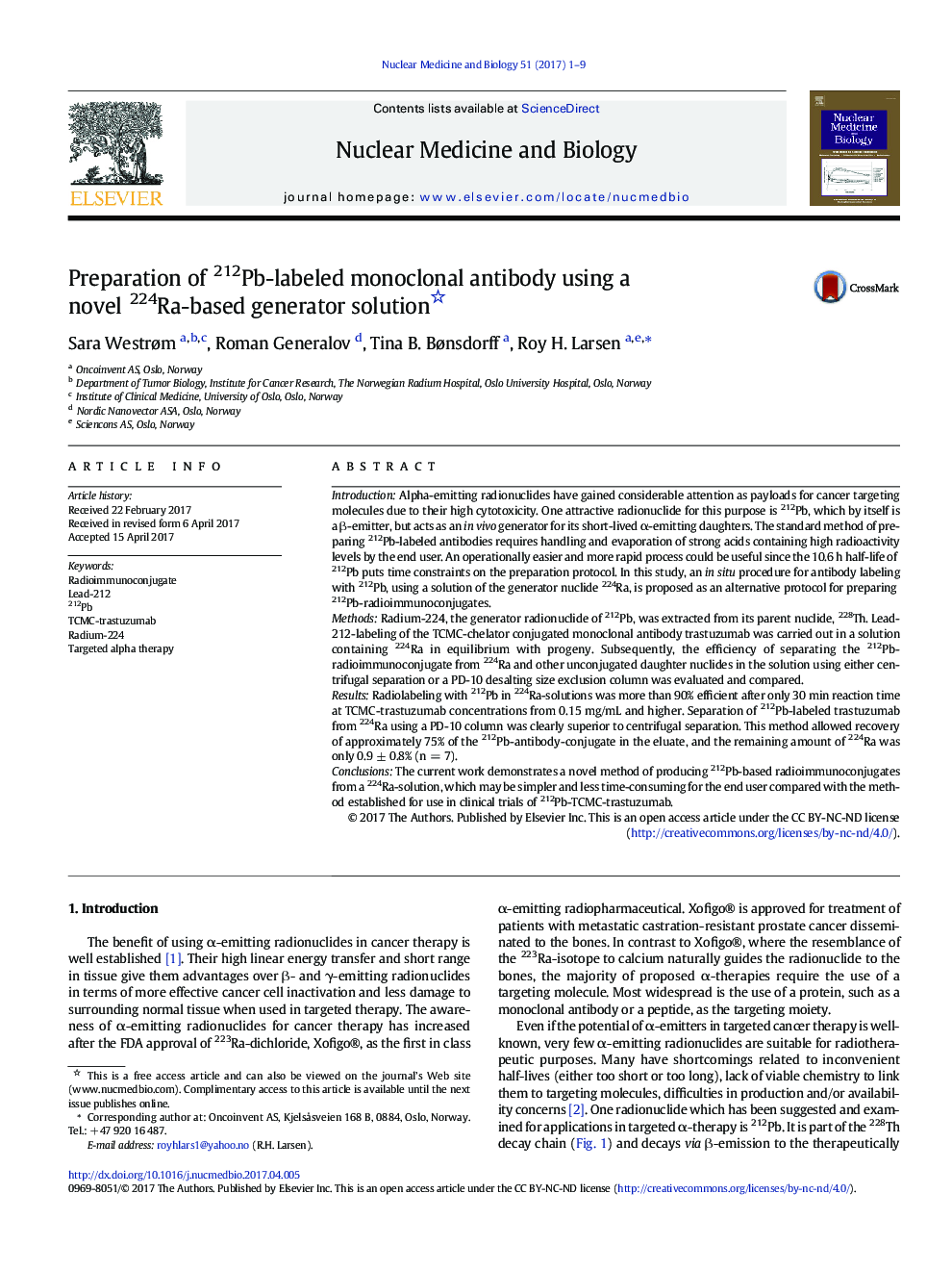| Article ID | Journal | Published Year | Pages | File Type |
|---|---|---|---|---|
| 5529038 | Nuclear Medicine and Biology | 2017 | 9 Pages |
IntroductionAlpha-emitting radionuclides have gained considerable attention as payloads for cancer targeting molecules due to their high cytotoxicity. One attractive radionuclide for this purpose is 212Pb, which by itself is a β-emitter, but acts as an in vivo generator for its short-lived α-emitting daughters. The standard method of preparing 212Pb-labeled antibodies requires handling and evaporation of strong acids containing high radioactivity levels by the end user. An operationally easier and more rapid process could be useful since the 10.6 h half-life of 212Pb puts time constraints on the preparation protocol. In this study, an in situ procedure for antibody labeling with 212Pb, using a solution of the generator nuclide 224Ra, is proposed as an alternative protocol for preparing 212Pb-radioimmunoconjugates.MethodsRadium-224, the generator radionuclide of 212Pb, was extracted from its parent nuclide, 228Th. Lead-212-labeling of the TCMC-chelator conjugated monoclonal antibody trastuzumab was carried out in a solution containing 224Ra in equilibrium with progeny. Subsequently, the efficiency of separating the 212Pb-radioimmunoconjugate from 224Ra and other unconjugated daughter nuclides in the solution using either centrifugal separation or a PD-10 desalting size exclusion column was evaluated and compared.ResultsRadiolabeling with 212Pb in 224Ra-solutions was more than 90% efficient after only 30 min reaction time at TCMC-trastuzumab concentrations from 0.15 mg/mL and higher. Separation of 212Pb-labeled trastuzumab from 224Ra using a PD-10 column was clearly superior to centrifugal separation. This method allowed recovery of approximately 75% of the 212Pb-antibody-conjugate in the eluate, and the remaining amount of 224Ra was only 0.9 ± 0.8% (n = 7).ConclusionsThe current work demonstrates a novel method of producing 212Pb-based radioimmunoconjugates from a 224Ra-solution, which may be simpler and less time-consuming for the end user compared with the method established for use in clinical trials of 212Pb-TCMC-trastuzumab.
